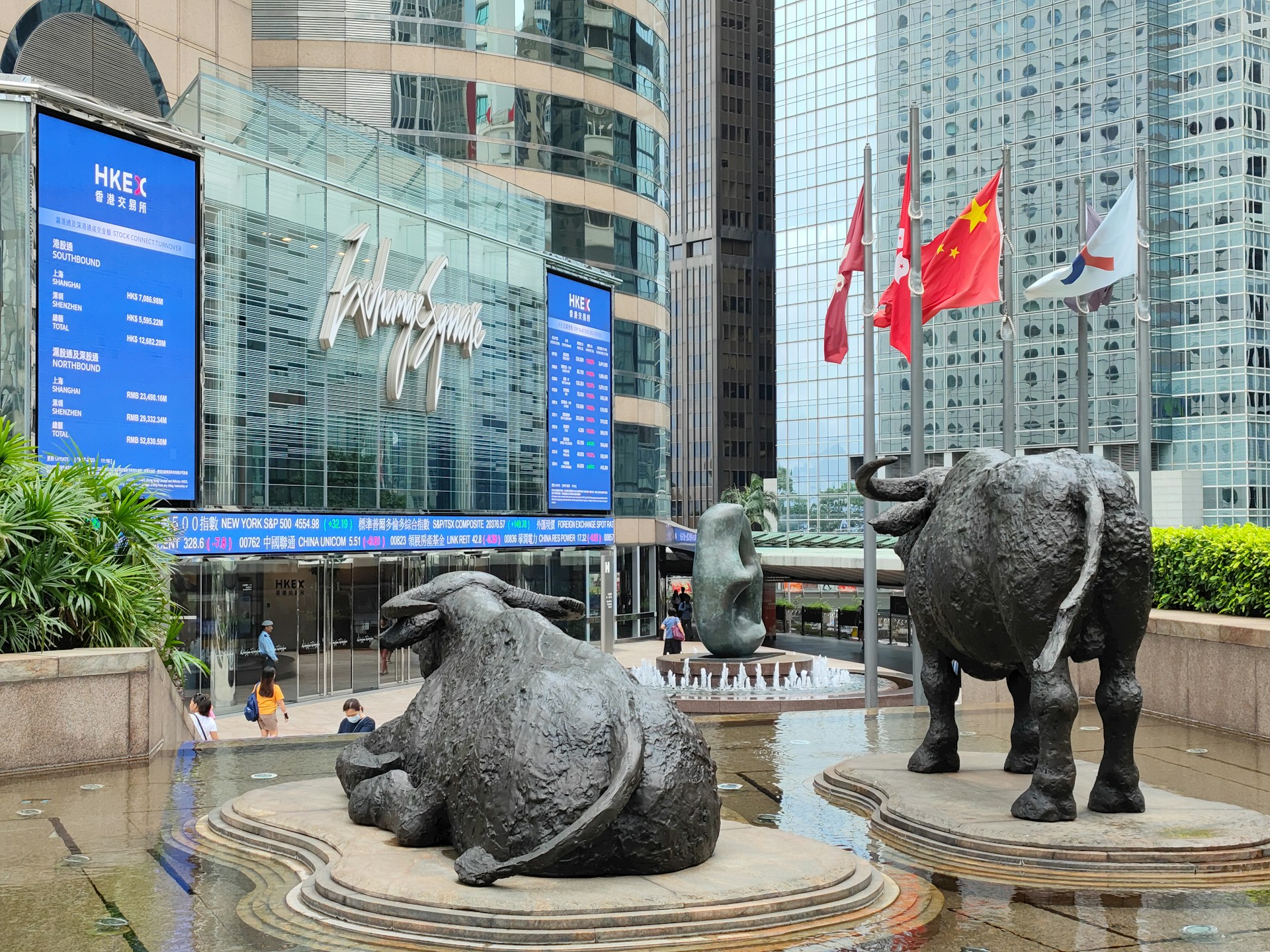Hong Kong equities began the week in a holding pattern, with the Hang Seng Index fluctuating narrowly as investors weighed two impending catalysts: the expiry of the US-China tariff deadline and the release of earnings from China’s largest technology companies. By mid-morning, the benchmark was up 0.2 per cent at 24,911.41, while the Hang Seng Tech Index inched 0.1 per cent higher. On the mainland, the CSI 300 Index and Shanghai Composite Index both advanced 0.5 per cent, suggesting that domestic sentiment was firmer than the mood in the offshore market.
The subdued trade underscored a wider pattern in cross-border capital behaviour. Mainland benchmarks are presently supported by domestic fund allocations into large-cap sectors aligned with Beijing’s industrial policy—areas such as renewable energy and advanced manufacturing that enjoy regulatory support and relatively stable demand. Hong Kong, by contrast, remains exposed to the ebb and flow of foreign capital sentiment, making it more sensitive to geopolitical risk events. The approaching US-China tariff decision is particularly significant in this regard: should the deadline lapse without an agreement or extension, it could revive frictions across high-value trade categories, affecting revenue forecasts and valuation multiples for Hong Kong-listed companies deeply tied to export markets.
Stock-specific movements hinted at the kind of selective positioning typical when institutional allocators avoid broad-based directional bets. Xinyi Solar Holdings gained 4.4 per cent to HK$3.30, reflecting optimism around renewable infrastructure and the structural push for clean energy deployment. BYD Electronic International rose 4.7 per cent to HK$38.18, suggesting confidence in high-margin electronic manufacturing that is less vulnerable to immediate tariff risk due to diversified production footprints. Alibaba Group Holding added 1.6 per cent to HK$118.10, with market participants anticipating that the tech giant’s earnings will demonstrate resilience in revenue streams despite tighter domestic competition and regulatory constraints.
The declines in Galaxy Entertainment, down 3.3 per cent to HK$39.38, and Chow Tai Fook Jewellery Group, off 2.3 per cent to HK$13.69, told the other side of the story. These sectors remain cyclical and dependent on discretionary spending patterns, which are under pressure as Chinese household sentiment shows mixed recovery signals. Macau casino operators face headwinds from both policy—such as potential adjustments to capital movement rules—and operational variables like inconsistent tourist flows. Luxury retail, meanwhile, remains acutely exposed to shifts in the wealth effect and the spending confidence of the upper-middle-class consumer segment.
From a macro-capital flows perspective, Monday’s narrow trading range reflected a deliberate reluctance by large asset managers and sovereign allocators to alter exposure ahead of binary policy events. The Hong Kong dollar peg remains stable and FX volatility low, which indicates that currency hedging has not yet been aggressively deployed. However, this calm can be quickly disrupted if the tariff deadline outcome is perceived as escalation rather than deferral.
The broader institutional focus is now on the upcoming earnings season for China’s technology majors. These reports will be scrutinised not just for topline growth but for margin stability, international market traction, and the scale of regulatory compliance costs. A narrative of cost discipline coupled with revenue expansion could bolster Hong Kong’s appeal as the offshore gateway for Chinese equity exposure. Yet, this appeal remains conditional—geopolitical stability, or at least predictability, is still the critical prerequisite for meaningful risk reallocation.
In policy terms, the tariff deadline is more than a trade matter; it is a signal test for how much both Washington and Beijing are willing to stabilise or recalibrate their economic engagement. For Hong Kong, the result will feed directly into the perceived reliability of its market as a capital conduit. A benign outcome—such as a temporary suspension or phased renegotiation—could trigger a short-term rally as capital re-engages with cyclicals and export-linked names. Conversely, an adverse shift could push allocators further into defensive plays within the market or redirect flows toward other regional hubs perceived as more insulated.
The divergence in Monday’s mainland and Hong Kong market moves also highlights differing investor bases. Mainland equities benefit from a predominantly domestic investor pool, whose capital is often guided by internal policy signals and liquidity conditions set by the People’s Bank of China. Offshore investors in Hong Kong, however, price in global macro risks more acutely, particularly those linked to US monetary policy and cross-border trade dynamics. This structural difference means that even when fundamentals align, the markets may move out of sync in the short term.
In the near term, volatility in Hong Kong is likely to remain event-driven rather than trend-driven. Absent a material change in the policy environment, institutional players will continue to manage exposure within tightly defined risk bands. The preference will be for structural growth sectors—renewables, high-end manufacturing, and scalable digital platforms—where earnings visibility is less likely to be derailed by external shocks. Discretionary sectors and heavily export-dependent industries will remain underweighted until macro clarity improves.
The day’s muted activity is not indecision—it is disciplined positioning. Sovereign wealth funds and major asset managers are holding their lines, choosing to wait out binary policy risk rather than pre-empt it. The split between defensive mainland accumulation and selective Hong Kong tech buying points to a willingness to back long-term themes, but only under conditions where risk can be tightly managed. If the tariff deadline passes without deterioration in trade relations, the return of risk capital could be rapid and pronounced. For now, however, the message from the market is clear: patience is the strategy, and capital will not move meaningfully until the policy signal is unambiguous.















